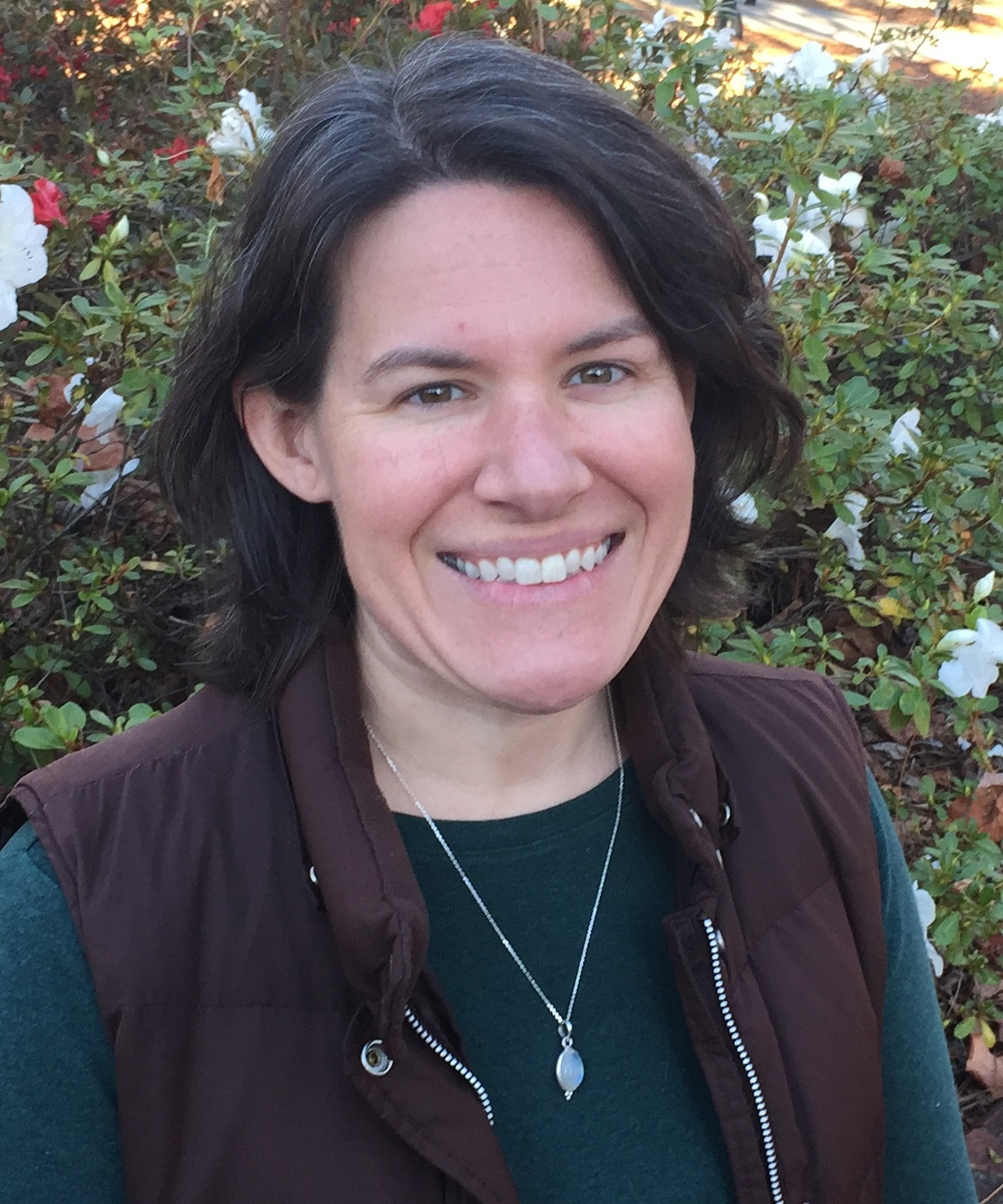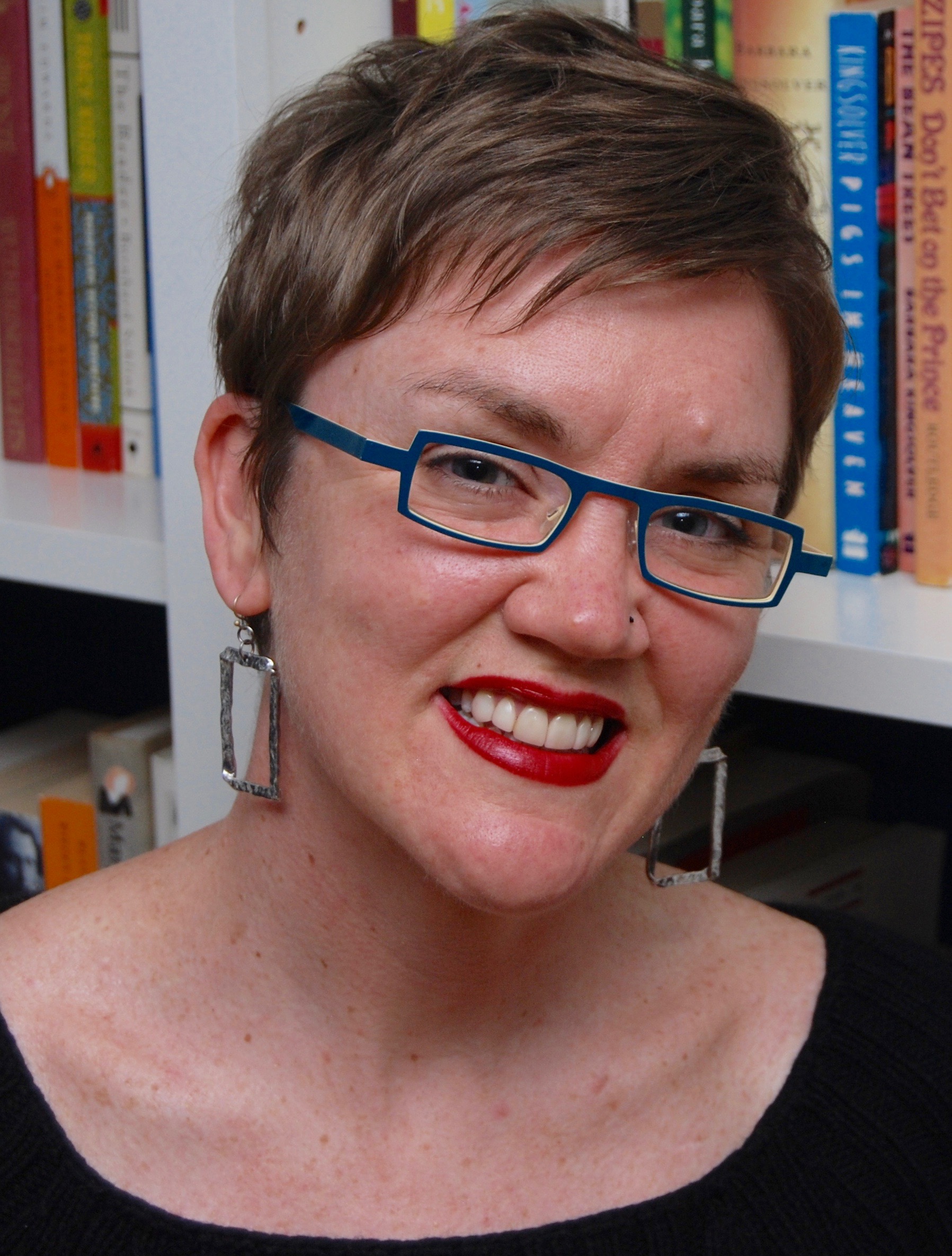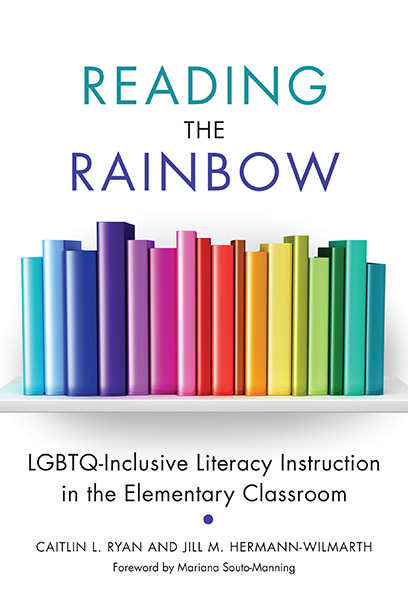
 Winner of the 2018 Literacy Research Association’s Edward B. Fry Book Award, Reading the Rainbow: LGBTQ-Inclusive Literacy Instruction in the Elementary Classroom by Caitlin L. Ryan and Jill M. Hermann-Wilmarth addresses LGBTQ topics in early education. Drawing on examples of teaching from elementary school classrooms, this timely book for practitioners explains why LGBTQ-inclusive literacy instruction is possible, relevant, and necessary in grades K–5.
Winner of the 2018 Literacy Research Association’s Edward B. Fry Book Award, Reading the Rainbow: LGBTQ-Inclusive Literacy Instruction in the Elementary Classroom by Caitlin L. Ryan and Jill M. Hermann-Wilmarth addresses LGBTQ topics in early education. Drawing on examples of teaching from elementary school classrooms, this timely book for practitioners explains why LGBTQ-inclusive literacy instruction is possible, relevant, and necessary in grades K–5.
The authors show how expanding the English language arts curriculum to include representations of LGBTQ people and themes will benefit all students, allowing them to participate in a truly inclusive classroom. The text describes three different approaches that address the limitations, pressures, and possibilities that teachers in various contexts face around these topics. The authors make clear what LGBTQ-inclusive literacy teaching can look like in practice, including what teachers might say and how students might respond.
The foreword to the book by Mariana Souto-Manning, excerpted below, offers an engaging, structured argument for the positive benefits of committing to LGBTQ inclusive teaching in the elementary classroom.
COMMITTING TO JUSTICE
Reading the Rainbow as a Right and Responsibility
Will you commit to justice in and through your teaching? This is the question at the heart of Caitlin Ryan’s and Jill Hermann-Wilmarth’s book, Reading the Rainbow: LGBTQ-Inclusive Literacy Instruction in the Elementary Classroom. In this book filled with powerful invitations and resources, Ryan and Hermann-Wilmarth, who were elementary school teachers before becoming teacher educators, invite us to enact justice in our classrooms as we honor our students’ rights and work to foster equity. They offer a compelling rationale for LGBTQ inclusion in the elementary grades as a matter of justice.
Having engaged in LGBTQ-inclusive teaching in the primary grades in a public school in the South (Souto-Manning & Hermann-Wilmarth, 2008) and collaborated with teachers such as Dana Frantz Bentley (Bentley & Souto-Manning, 2016, 2018; Souto-Manning, 2013), who teaches pre-K in the Northeast, I know all too well that there are fears fueled by myths and misconceptions that often prevent teachers from discussing LGBTQ topics with young children. Although we educators tend to focus on whether children are ready, the real obstacle often preventing some of us from engaging in this work can be represented by the following question: Am I ready? I can’t possibly talk about sex in the elementary school classroom. Rest assured that this book is not about sex education in the elementary classroom. Yet, if questions and concerns such as these have ever crossed your mind and prevented you from engaging in LGBTQ-inclusive teaching, you are in for a treat, as this book takes such issues and questions head on.
In this engaging and powerful book, Ryan and Hermann-Wilmarth explain that LGBTQ-inclusive teaching means acknowledging the humanity of LGBTQ individuals and communities. Through a number of rich and diverse examples from elementary classrooms, they make visible how elementary teachers have negotiated LGBTQ-inclusive teaching, shedding light onto possibilities for us to engage in LGBTQ-inclusive teaching and learning in our own classrooms. They make visible how LGBTQ-inclusive curriculum and teaching are not “add-ons” or “extras;” they are instead invitations to re-envision well-known curricular structures such as readalouds, book discussions, and writing workshops.
In addition to identifying a number of wonderful resources (throughout the book and in the Appendix), Ryan and Hermann-Wilmarth also offer new ways of engaging with existing resources as a pathway for LGBTQ inclusive teaching. They show, for example, how books in the Harry Potter series can be repositioned to foster LGBTQ-inclusive literacy teaching and learning. This is not to say that there are no obstacles to doing LGBTQ inclusive teaching; there are. And Ryan and Hermann-Wilmarth address these throughout this book, in sections aptly entitled “Considerations and Challenges in Your Context.” After reading this book, I am convinced that you will not be able to find an excuse to sanction the exclusion and invisibilization of LGBTQ individuals, communities, histories, and issues from the elementary classroom.
But since you haven’t yet started reading the powerful book ahead of you, you may still be questioning why you should dedicate the time and effort to engage in reading this book and then in “reading the rainbow” in your own classroom. I propose that “reading the rainbow,” or LGBTQ inclusion in the elementary classroom, is not a privilege or an option; it is a right and a responsibility. Let me explain. A right is defined as “being in accordance to what is just;” as such, it rests on equity. It is the right of our students to see themselves, their families, and their communities represented and included. It is also the right of students who do not belong to LGBTQ families and communities to learn about diversities within the world in which they live in ways that don’t deny anyone’s humanity and that don’t foster stereotypes. The denial of such a right is inequitable, unethical, and harmful (causing possible emotional and psychological harm; see NAEYC, 2011). Quite simply, it fosters injustice in and through teaching.
It is our responsibility as teachers to commit to LGBTQ-inclusive teaching and to foster equitable classrooms. After all, as Ryan and Hermann-Wilmarth propose, in equitable classrooms, “all students are encouraged to learn about the diverse world around them in more nuanced and expansive ways” (p. 1). Ryan and Hermann-Wilmarth urge us to embrace our responsibility as educators to question the silences in our classrooms, in the materials we use, and even in the expanded representations we bring to the classroom.
As you engage in this soon-to-begin wondrous learning journey, I hope you will fully engage and take Ryan’s and Hermann-Wilmarth’s invitations to stop and think about what each chapter means to you by considering the “Stop and Think” questions they offer throughout the book. They will help you envision ways of getting started or to expand your current approach to LGBTQ-inclusive teaching. They are rooted in the belief that “everyone can do something to make their classrooms more inclusive” (p. 12). But most of all, I sincerely hope that you will commit to fostering justice in and through your teaching. Why? In the words of a then 4-year-old preschooler, who is now an elementary school student: “That’s fair and that’s how it works” (Bentley & Souto-Manning, 2016, p. 195).
—Mariana Souto-Manning

Reading the Rainbow
LGBTQ-Inclusive Literacy Instruction in the Elementary Classroom
Caitlin L. Ryan and Jill M. Hermann-Wilmarth
Featured Image: LGBTQ equality pride rights rainbow via Pixabay
